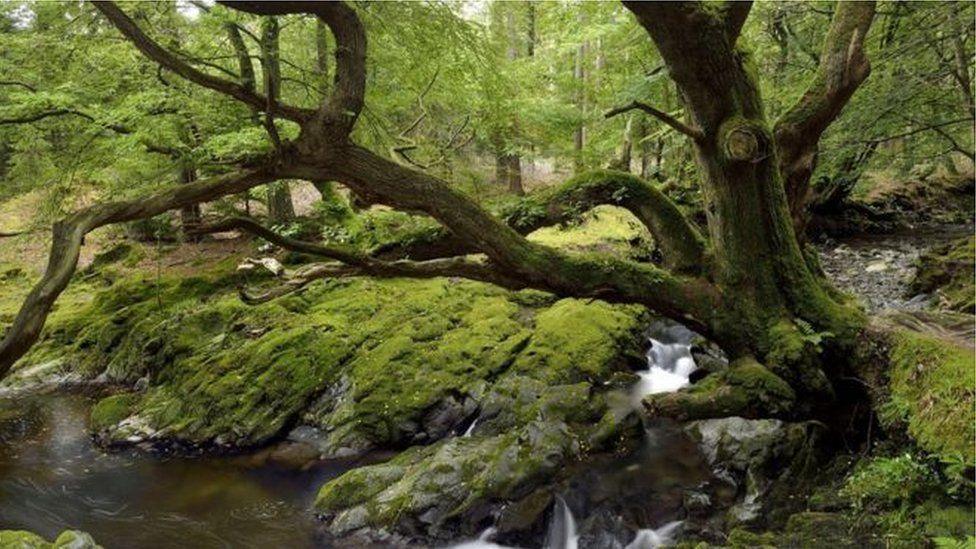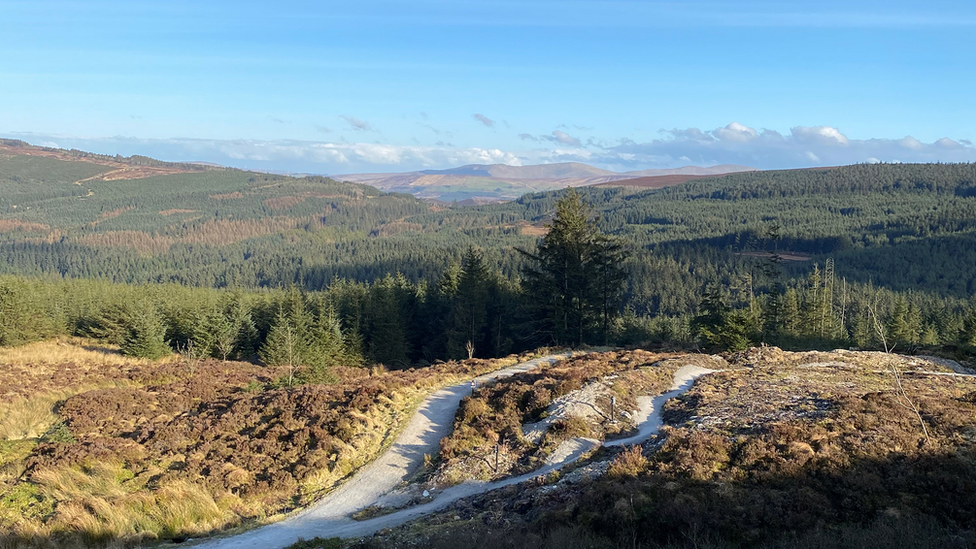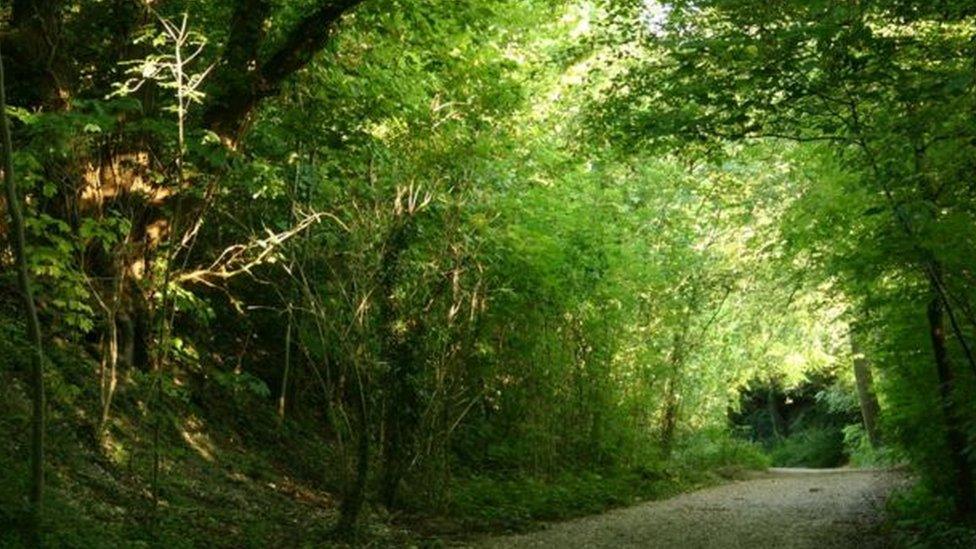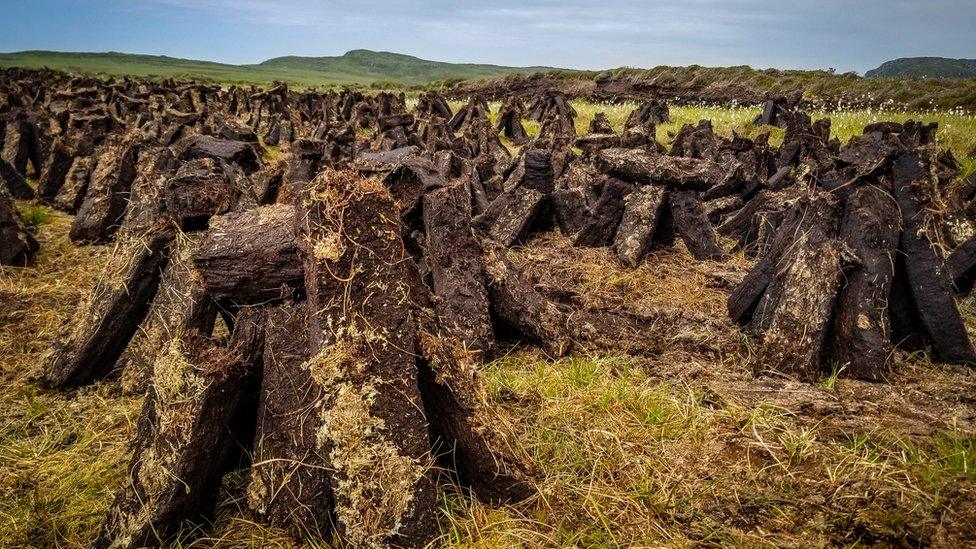First NI environment strategy 'should be more ambitious'
- Published

Northern Ireland is one of the least-forested parts of Europe
More than 30 organisations and individuals have called for greater ambition in Northern Ireland's first-ever environment strategy.
It comes after a Stormont committee was told the target for increasing woodland cover was outdated.
A consultation on the draft strategy closed on Tuesday.
Agriculture and Environment Minister Edwin Poots said it would "form the basis for a coherent and effective set of interventions".
These could deliver real improvements in the quality of the environment, he added.
But it has been criticised as having out-of-date targets, or ones that fall short of what is promised in other UK jurisdictions and the Republic of Ireland.
'Simply not good enough'
The RSPB in Northern Ireland co-ordinated the open letter sent to the first and deputy first ministers.
Its director welcomed the consultation on the strategy, but said she was concerned that it did not "adequately address" the climate emergency.
"The majority of commitments outlined in the strategy are not time-bound or binding, with some of the targets falling short of actions currently required by law," Joanne Sherwood said.
"This is simply not good enough.
"This decade is crucial for action, and the decisions made by the Northern Ireland Executive now will have lasting impacts for generations to come."
The letter was signed by organisations including Friends of the Earth NI, Keep Northern Ireland Beautiful, Action Renewables and Ulster Wildlife.
It described the strategy as "unambitious" and "lacking specificity", and called on the Northern Ireland Executive to take a series of actions to bolster it, including "dedicated and long-term resourcing" and "robust governance".
The environment strategy comes under the umbrella of the Green Growth Strategy, which seeks to balance addressing climate change and improving the environment with developing the economy.
When finished, the strategy will be the first time Northern Ireland has had defined targets for the environment in one document.
Earlier in January, a Stormont committee heard criticisms of the target for increasing woodland cover.
The strategy proposes increasing woodland cover in Northern Ireland to 8.8% by 2030 - a figure, an official said, that came from an archived woodland register "and will be more ambitious in the final version".

Officials from the Department of Agriculture and Rural Affairs said the final woodland cover target will be more ambitious
Northern Ireland is one of the most deforested places in Europe.
Two officials told environment committee members the 8.8% figure would be revised.
"That is essentially out of date," Simon Webb from the Department of Agriculture and Rural Affairs' environment strategy team said.
"It's based off an archived figure of the Woodland Register, and we'll be seeking to update that.
"So that target will be more ambitious in the final version."
That would see a higher target being set, the head of the Forest Planning Branch, Richard Schaible, said.
"The revision will be to just over 9%, rather than 8.8%," he added.
Democratic Unionist Party (DUP) committee member William Irwin expressed concern about the challenge of planting enough trees to meet that target.
"It's a very big challenge," Mr Schaible replied.
"It will involve land use change.
"There are more than 23,000 farm businesses in Northern Ireland. A very small percentage of those have engaged with our forestry grant schemes.
"In fact, probably in the order of 90% haven't.
"If a significant number of farm businesses came forward with a proposal to plant a very modest area, we would be able to achieve the Forests For Our Future programme and even go beyond that."
Northern Ireland is still the only part of the UK not to have any climate change legislation in place, although two bills are on the path to becoming legislation.
Related topics
- Published14 April 2021

- Published2 March 2020

- Published12 November 2021
